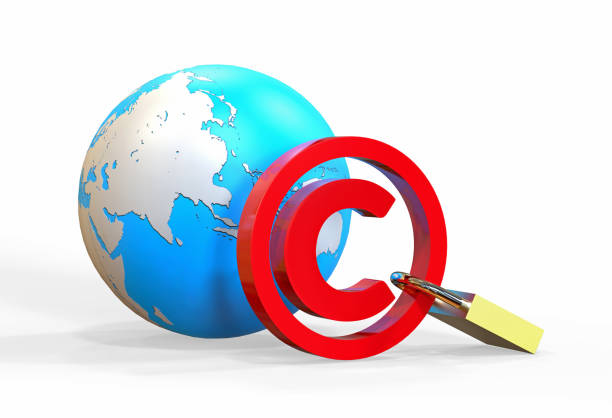Introduction
In today’s interconnected world, intellectual property plays a pivotal role in shaping the success of businesses on a global scale. At the heart of this landscape lies the intricate web of international patent filing, a strategic maneuver that requires careful consideration and planning. This blog aims to unravel the complexities surrounding international patent filing strategies, providing insights into the critical factors influencing decisions and sharing effective approaches to secure a strong global intellectual property portfolio.

Understanding International Patent Systems
Before delving into strategies, it’s crucial to understand the foundation of international patent systems. Entities such as the World Intellectual Property Organization (WIPO), the European Patent Office (EPO), and the United States Patent and Trademark Office (USPTO) contribute to the global framework. However, each system has its nuances and differences in patent laws, creating a diverse landscape that necessitates a nuanced approach to international patent filing.
Factors Influencing International Patent Filing Strategies
Industry-Specific Considerations
Different industries face unique challenges and opportunities when it comes to international patent filing. For instance, the pharmaceutical sector may prioritize regions with a robust regulatory framework, while technology companies might focus on markets with high demand and innovation ecosystems.
Market Prioritization and Potential Revenue
Strategic market prioritization is key. Understanding potential revenue streams and aligning them with patent filing decisions ensures a judicious allocation of resources. Businesses must strategically identify and prioritize key markets to optimize the allocation of resources and ensure a targeted approach to patent protection. This involves a thorough analysis of market dynamics, including the size of the target market, consumer demand, and competitive landscapes.
Legal and Regulatory Challenges
Navigating the legal and regulatory landscape is a critical aspect of international patent filing. This involves staying abreast of changes in patent laws, understanding the implications of these changes, and adapting strategies accordingly.
Cost Considerations
International patent filing can be a substantial investment. Balancing the need for global coverage with cost-effectiveness is a delicate task. The financial investment associated with securing international patents can be substantial, encompassing filing fees, translation costs, attorney fees, and maintenance expenses. Therefore, companies must strategically allocate resources to prioritize key markets and ensure that their patent portfolio aligns with business objectives.
Common Pitfalls in International Patent Filing
Timing Issues and Grace Periods
Failing to adhere to strict timelines, especially grace periods for disclosure, can jeopardize patent eligibility. In some jurisdictions, public disclosure of an invention before filing may impact the ability to obtain a patent. Businesses must carefully manage timing to avoid unintentional loss of rights.
Inadequate Research on Local Patent Laws
Insufficient understanding of the nuances of local patent laws in target jurisdictions can lead to ineffective patent protection. Each country has unique requirements and procedures, and failure to conduct thorough research may result in rejected applications or limited enforceability.
Insufficient Patent Portfolio Management
Neglecting regular reviews and management of the patent portfolio can result in inefficiencies and increased costs. Businesses should continuously assess the relevance of existing patents, prune unnecessary filings, and adapt the portfolio to align with evolving business objectives and market dynamics.
Lack of Coordination in Filing Strategy
A fragmented or uncoordinated approach to filing strategies across different jurisdictions can lead to missed opportunities and increased costs. Lack of coordination may result in inconsistent protection and difficulties in enforcing rights globally.

Effective International Patent Filing Strategies
Securing global intellectual property rights is a multifaceted challenge that demands a comprehensive and strategic approach. Successful international patent filing strategies go beyond the traditional understanding of protecting innovations; they encompass a nuanced understanding of regional variations in patent laws, market dynamics, and emerging technological trends. This discussion outlines key elements and effective strategies that businesses can employ to navigate the intricacies of international patent filing and safeguard their innovations on a global scale.
1. Prioritizing Key Markets
The foundation of an effective international patent filing strategy lies in prioritizing key markets. This involves a thorough analysis of market potential, taking into account factors such as consumer demand, regulatory environments, and the competitive landscape. By identifying and prioritizing regions critical to their business objectives, companies can allocate resources judiciously and tailor their patent filing strategy for maximum impact.
2. Coordination and Collaboration with Local Experts
Engaging with local patent attorneys and leveraging the expertise of professionals who understand the nuances of regional patent systems is invaluable. Local experts can provide insights into unique legal requirements, cultural considerations, and market trends. Establishing strong networks and partnerships with local professionals fosters a coordinated approach, ensuring that patent filings align seamlessly with the intricacies of each jurisdiction.
3. Utilizing International Patent Cooperation Treaties (PCT)
The Patent Cooperation Treaty (PCT) offers a streamlined approach to international patent filing by allowing applicants to seek protection simultaneously in multiple countries. Effectively utilizing the PCT process not only simplifies the filing procedure but also provides businesses with additional time to make informed decisions about where to pursue patent protection based on market developments and potential opportunities.
4. Strategic Use of Regional Patent Systems
Regional patent systems, such as the European Patent System (EPO) and collaborative efforts in Asia, offer alternative pathways to global protection. Tailoring strategies to leverage these regional systems can be advantageous, especially when seeking to protect innovations across a cluster of countries with shared legal frameworks.
5. Technology Transfer and Licensing for Global Reach
Beyond traditional patent filing, businesses can strategically employ technology transfer and licensing to enhance their global reach. Collaborative agreements not only generate revenue but also facilitate the dissemination of technology across borders, fostering innovation and addressing market-specific needs.
6. Continuous Monitoring of Technological Trends
Staying abreast of emerging technological trends is integral to an effective patent filing strategy. Companies should continuously monitor advancements in their industry, anticipate shifts in innovation, and adapt their patent portfolios to align with the evolving technological landscape. This proactive approach ensures that patent filings remain relevant and provide comprehensive protection.
7. Balancing Cost Considerations with Global Coverage
While international patent filing can be a substantial investment, businesses must strike a balance between the need for global coverage and cost considerations. Strategic budgeting, efficient portfolio management, and prioritizing filings based on market significance contribute to a cost-effective yet robust international patent strategy.
In conclusion, effective international patent filing strategies require a holistic understanding of the global patent landscape, a keen awareness of regional variations, and a proactive stance towards emerging trends. By prioritizing key markets, collaborating with local experts, leveraging international treaties, and embracing alternative avenues for protection, businesses can navigate the complexities of international patent filing with agility and resilience. In doing so, they not only secure their innovations but also position themselves for success in a competitive and ever-changing global marketplace.
Technological Trends and Their Impact on Patent Strategies
In the ever-evolving landscape of technological innovation, staying attuned to emerging trends is paramount for businesses seeking to fortify their intellectual property (IP) portfolios. Technological advancements not only shape industries but also influence the strategies companies employ to protect their innovations. Several key trends are currently reshaping the patent landscape and demanding strategic adaptations:
Artificial Intelligence (AI) Dominance
The rise of AI is reshaping industries across the board. In patent strategies, this trend is manifest in the increasing number of AI-related patent applications. Companies are not only filing patents to protect AI innovations but are also grappling with the challenges of patenting inventions created by AI systems.
Blockchain and Distributed Ledger Technology
Blockchain technology has transcended its origins in cryptocurrency, with applications now spanning finance, supply chain, and healthcare. This trend necessitates novel patent strategies to protect inventions related to blockchain and distributed ledger technologies, considering the collaborative and decentralized nature of these systems.
Biotechnological Breakthroughs
Advances in biotechnology, including gene editing and personalized medicine, present both opportunities and challenges. Patent strategies must address ethical considerations and navigate the evolving landscape of biotech regulations to ensure comprehensive protection for groundbreaking innovations.
Clean Energy and Sustainability Innovations
The global focus on sustainability is driving technological innovations in clean energy. Patent strategies in this space require a keen understanding of the intersection between technology and environmental concerns, with an emphasis on protecting innovations that contribute to a sustainable future.
Internet of Things (IoT) Integration
The proliferation of IoT devices has created a vast interconnected ecosystem. Patent strategies must evolve to encompass the challenges of protecting innovations in a landscape where devices communicate seamlessly, addressing issues of interoperability, security, and data privacy.
5G Technology Advancements
The rollout of 5G technology is transforming connectivity and communication. Patent strategies in this space involve protecting inventions related to the infrastructure, devices, and applications that leverage the capabilities of 5G networks.
These technological trends demand strategic adaptations in patent filing strategies. Companies need to be agile in identifying patentable inventions, ensuring global coverage in jurisdictions relevant to the market, and addressing the unique challenges posed by each trend. Additionally, companies must consider the collaborative nature of innovation, particularly in areas like AI and blockchain, where inventions may result from the contributions of multiple entities.

The Role of Technology Transfer and Licensing
In the ever-expanding landscape of intellectual property, the role of technology transfer and licensing has become increasingly prominent. These mechanisms not only offer avenues for revenue generation but also serve as strategic tools for expanding global reach, fostering innovation, and managing risks associated with the dissemination of technology. The multifaceted role of technology transfer and licensing unfolds across several dimensions:
Global Reach and Market Expansion
Technology transfer and licensing agreements serve as powerful tools for companies looking to extend their global footprint. By entering into licensing agreements with entities in different regions, businesses can rapidly expand their market presence without the need for significant upfront investments in infrastructure or operations.
Risk Mitigation in Technology Dissemination
The transfer of technology from one entity to another inherently involves risks, including the potential loss of proprietary information. Licensing agreements provide a structured framework for technology dissemination, allowing businesses to share innovations while implementing safeguards to protect intellectual assets and maintain control over how their technology is used.
Strategic Revenue Streams
Beyond the traditional approach of securing patents, licensing provides businesses with an alternative revenue stream. Licensing agreements allow companies to monetize their intellectual property by granting others the right to use, produce, or sell their innovations. This strategic approach to revenue generation can contribute significantly to the overall financial health of a business.
Facilitating Collaborative Research Efforts
Technology transfer plays a crucial role in collaborative research projects, especially in industries that rely on joint ventures or partnerships. Collaborations often involve the exchange of technology, and well-structured technology transfer agreements enable seamless cooperation, ensuring that the intellectual property generated is effectively managed and leveraged by all parties involved.
Open Innovation and Collaborative Models
The concept of open innovation has gained traction, encouraging businesses to collaborate across industries and share technological advancements. Licensing agreements in open innovation models facilitate the exchange of ideas, allowing companies to tap into external expertise and drive collective progress in solving complex problems.
International Legal Considerations
Licensing agreements often span international borders, introducing legal complexities. Businesses must navigate different legal systems, adhere to international treaties, and consider jurisdictional nuances. Well-crafted licensing agreements account for these considerations, providing a legal framework that facilitates smooth technology transfer across diverse regions.
Leveraging Licensing for Technology Transfer and Commercialization
Beyond revenue generation, licensing can play a crucial role in technology transfer and commercialization. By strategically licensing their innovations to entities with complementary capabilities, businesses can expedite the development and commercialization of their technologies, bringing products and services to market more efficiently.
Conclusion
In conclusion, the landscape of international patent filing is undergoing profound shifts, influenced by dynamic technological trends, evolving legal frameworks, and an increasing emphasis on ethical considerations. Businesses navigating this complex terrain must adopt a strategic and adaptive mindset, prioritizing market insights, leveraging the potential of technology transfer and licensing, and anticipating the impact of emerging trends. As the global patent system continues to evolve, companies that proactively align their intellectual property strategies with the changing landscape, embracing innovation while adhering to legal and ethical standards, will not only safeguard their innovations but also position themselves for sustained success in the competitive global marketplace.

